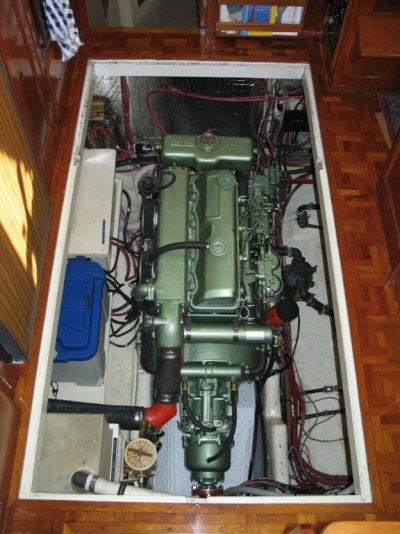Marin wrote:
*
SeaHorse II wrote:
I don't even know anyone who has a Lehman other than guys on this site!*
There are tons of them in boats in our marina.* They are found in lower-speed boats typically up to perhaps 40-45 feet in length.
The term "Lehman engine" is a bit misleading because Lehman Bros. marinized a number of types of engines while they were in business.* The oldest ones are the FL120 and its two derivatives, the FL80 (or 90) and the FL120 Turbocharged engine.* The FL120 operators manual covers all three.* The base six and four cylinder engines were designed by Ford of England in the 1950s, and Lehman's marinized version was used in production boats from the 1960s through the 1970s or so.
The next Lehman engine was the FL135.* These used a different base engine than the FL120 although it was a Ford of England engine as well.* The FL135 was used through the 1980s IIRC.
The FL120 and FL135 are the two "main" Lehman engines but they marinzed a number of other engines as well including some fairly powerful turbocharged ones.
The base engine for the FL120, the Ford Dorset engine, was orignally designed to be a truck engine.* In this application it was a total failure for several reasons.* But the same attributes that doomed it to failure as a truck engine made it ideal as a stationary industrial engine (cranes, generators, pumps, etc) and as a lower-speed, lower-load engine for things like tractors and harvesters.* And it was these attributes that made it an excellent candidate for a slow-boat marine engine.* For many decades all of Ford's diesel engines for trucks and tractors were made by Ford of England, even the engines going into equipment Ford was making in the USA.* This is why it's possible to find the FL120 base engine in old tractors and such in this country.
Lehman Bros. was not the only company marinizing Ford of England diesels.* A number of marinizing kits were designed by firms in the UK and elsewhere and there are Ford of England Dorset engines (base engine for the FL120) and Dover engines (base engine for the FL135) in boats all over the world but under different names because they were marinzed by other companies.
-- Edited by Marin on Saturday 18th of September 2010 10:21:55 PMCarey wrote:
And then there was the Ford Merlin. Also a British Ford truck/tractor engine marinized by Merlin of Florida. They made a straight six, typically producing 250-800 horse. Not a great engine.
-- Edited by Carey on Saturday 9th of October 2010 09:15:56 PM


